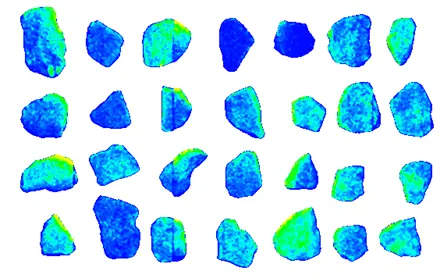This is not my first rant about pebbles – I have a thing about them.
And now, SRK has been looking at them more closely: What size are they? Does the hardness vary by size? What about opportunities to isolate waste particles – and only return the better-grade ones – to justify the power consumption going back through the grinding mill…twice? three times?
I’m a firm believer the natural order of things is dynamic, always changing, and likely not constant except for short periods. And the same goes for pebble composition. Pebbles can change in their composition as mill conditions vary; from a full mill to an empty one, the coarse material captured by the discharge screen and returned to the mill is not constant. So, how often do we check the grade of our pebbles? With today’s over-the-belt scanning technology is this a process stream we should be monitoring carefully? I believe so and aim to demonstrate this by assessing pebble samples collected under different conditions.
Look at the photo and scanned XRT sensor image below – a set of +26mm particles within the pebble stream. Do they look the same? They seem variable to me, and we know the grade of pebbles can vary from <0.05% Cu to over 2% Cu for a typical copper porphyry operation like we have here in British Columbia. SRK and Base Metallurgical Labs are currently evaluating pebble samples for clients. Stay tuned as this rant is not over yet…


